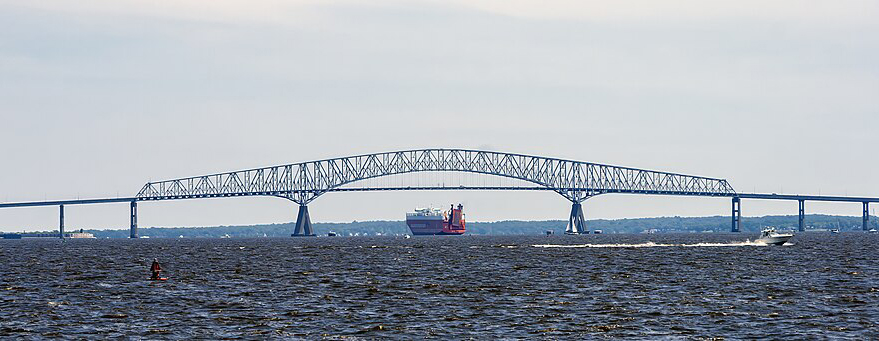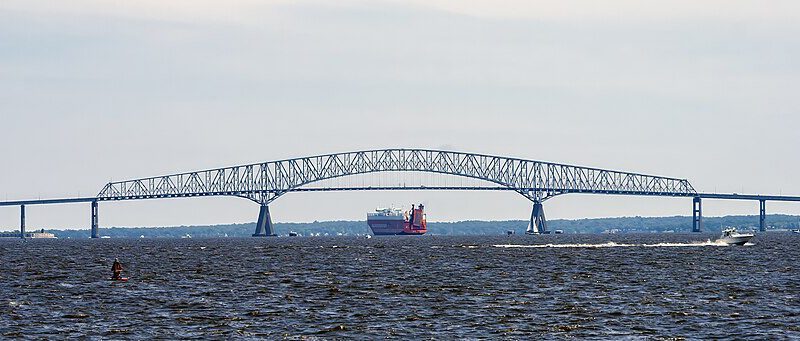
During the early morning hours of March 26, a 10,000-TEU capacity containership, the Singapore-flagged Dali, suffered a complete power loss, resulting in the massive vessel crashing into a support beam for the Francis Scott Key Bridge near the Port of Baltimore.
The cause of the outage is still under investigation, but the allision resulted in the deaths of six construction workers who had been on the bridge repairing potholes at the time, as well as the total loss of the bridge itself.
Part of the 1.6-mile bridge was turned into a twisted heap of metal by the 984-foot Maersk-chartered cargo ship, which weighs 95,000 tons when empty, but reportedly had over 2,000 containers aboard, carrying industrial and hazardous materials that were bound for Sri Lanka, according to various media reports.
In the aftermath of the incident, many have asked: could such a thing happen here on the West Coast, which is home to four of the five busiest seaports in North America?
According to available data, as well as various officials, the answer is both yes and no.
First, the good news. At the San Pedro Bay port complex, the location of the two busiest seaports in North America—the Port of Los Angeles and the adjoining Port of Long Beach—the possibility of a bridge being downed by one of the thousands of vessels that move through the bay annually is highly remote.
“The pillars that support our bridge are land-based, they’re not in the water,” Port of Long Beach CEO Mario Cordero explained in media interviews following the Baltimore disaster. “So any vessel that comes underneath the Long Beach International Gateway Bridge does not have to navigate around a pillar.”
Similarly, the Vincent Thomas Bridge at the Port of Los Angeles also has land-based support pillars, not ones that come out of the water.
In addition, the two L.A. and Long Beach bridges also have “fender” systems around them to further protect them in the unlikely event that they’re stuck by marine traffic, according to the California Department of Transportation.
However, when it comes to bridges near ports elsewhere on the West Coast, there is the possibility of an incident similar to the one in Baltimore playing out.
According to federal records, there are five susceptible West Coast waterway bridges—the Golden Gate Bridge and San Francisco-Oakland Bay Bridge in Northern California, the St. Johns Bridge near the Port of Portland, Ore., the Lewis and Clark Bridge, which traverses parts of both Oregon and Washington state; and the Tacoma Narrows Bridge, near the Port of Tacoma.
Each of these are built so that if one component fails, the entire bridge could come tumbling down, like in Baltimore.
The Francis Scott Key Bridge was a steel arch continuous through truss bridge, and while the West Coast bridges all utilize different designs, each has components that make them vulnerable, according to data from the National Bridge Inventory and the National Transportation Safety Board.
To be clear, this doesn’t mean that the bridges are inherently unsafe to travel upon: it just means that if something were to strike one of their support pillars—either by accident or by design, it could cause the entire span to tumble into the water.
Therefore, in the coming months and years, it wouldn’t be surprising to see federal, regional and local officials re-examining the design of the above mentioned bridges, as well as others at or near critical waterways to see if more can or should be done to prevent another Baltimore happening in the future.
The nation’s bridges are too vital a component of America’s goods movement—and human lives are too valuable—to allow something like what happened in Baltimore to happen again elsewhere.
Managing Editor Mark Nero can be reached at (619) 313-4351 or mark@maritimepublishing.com

